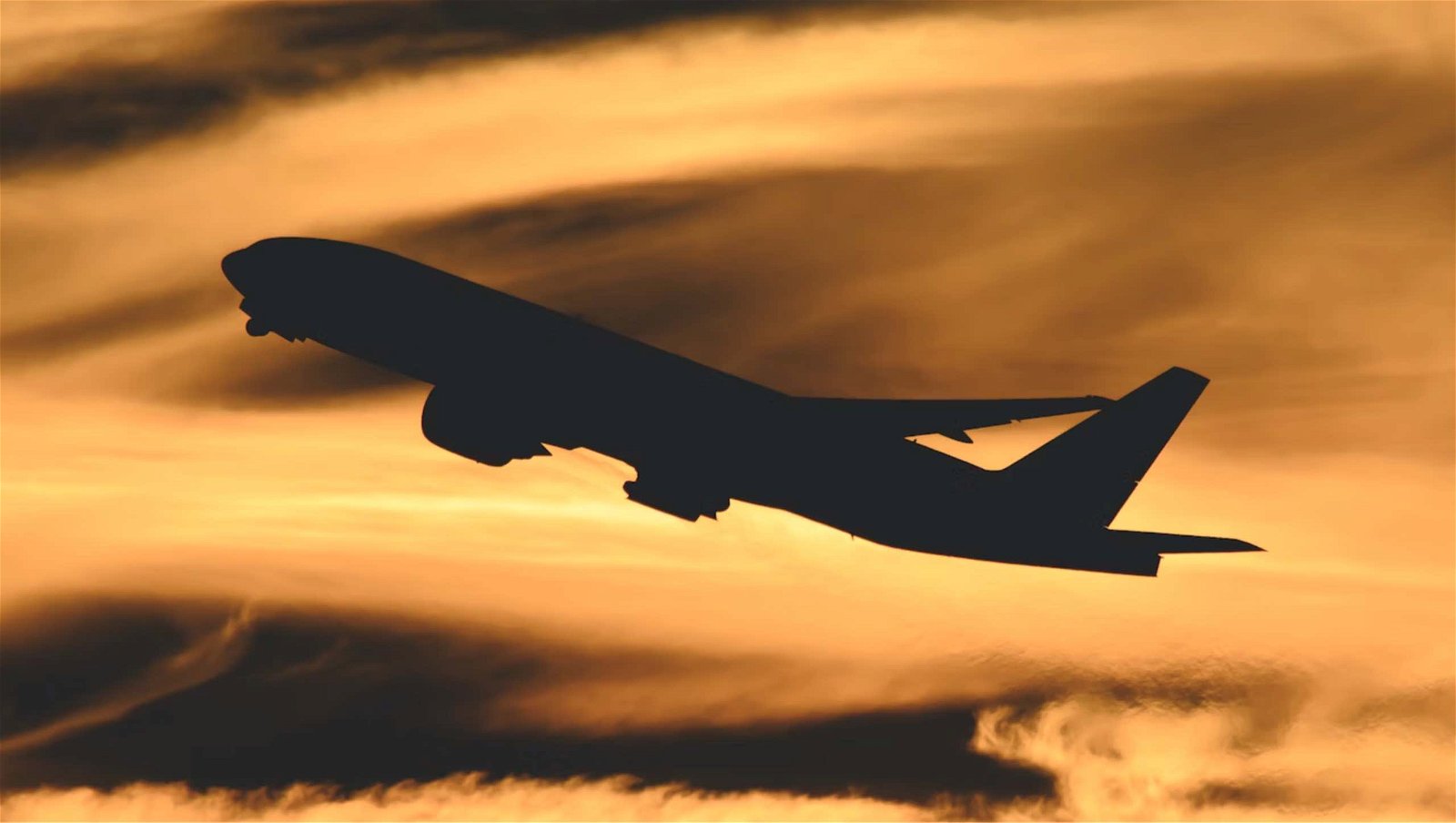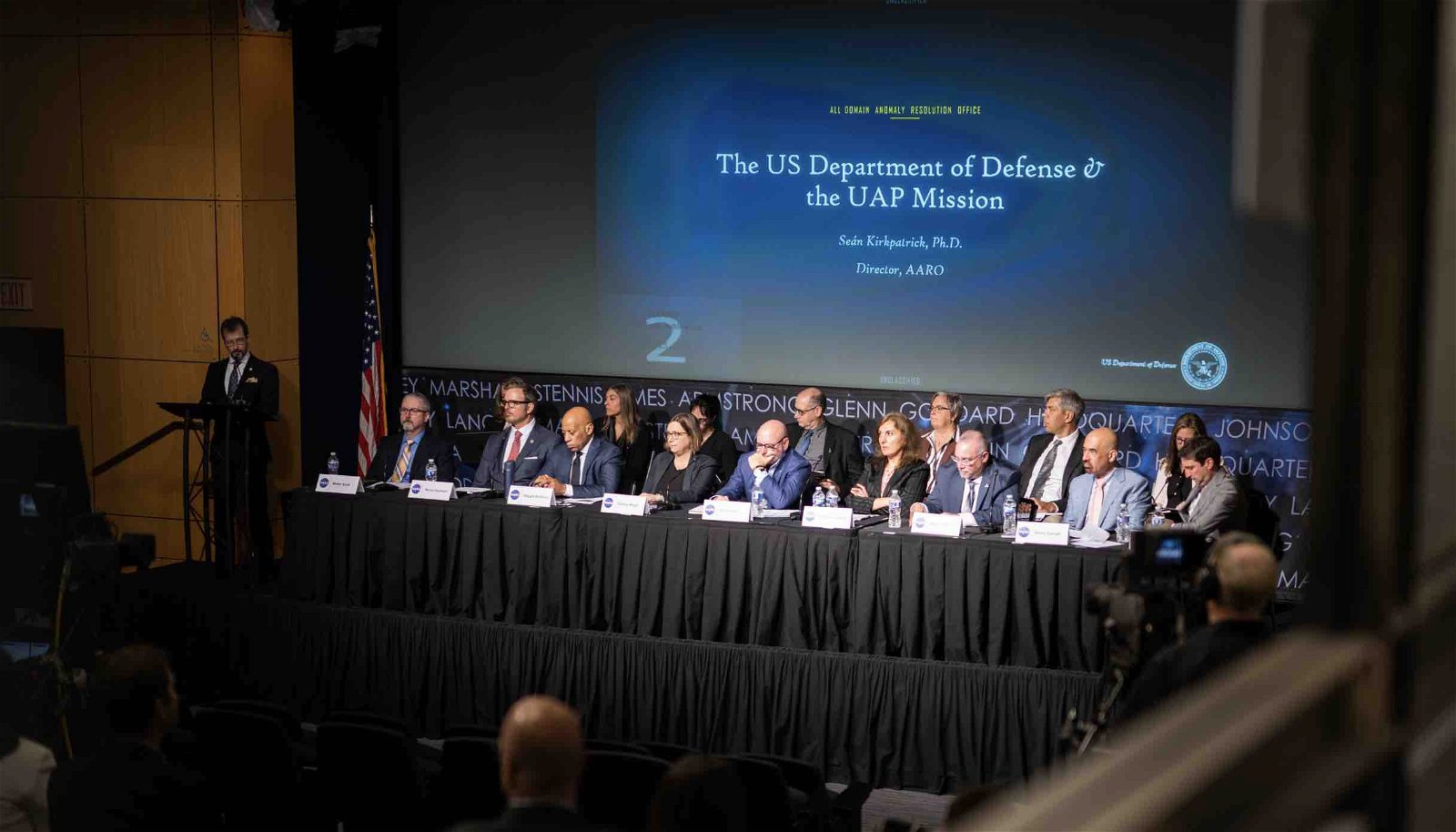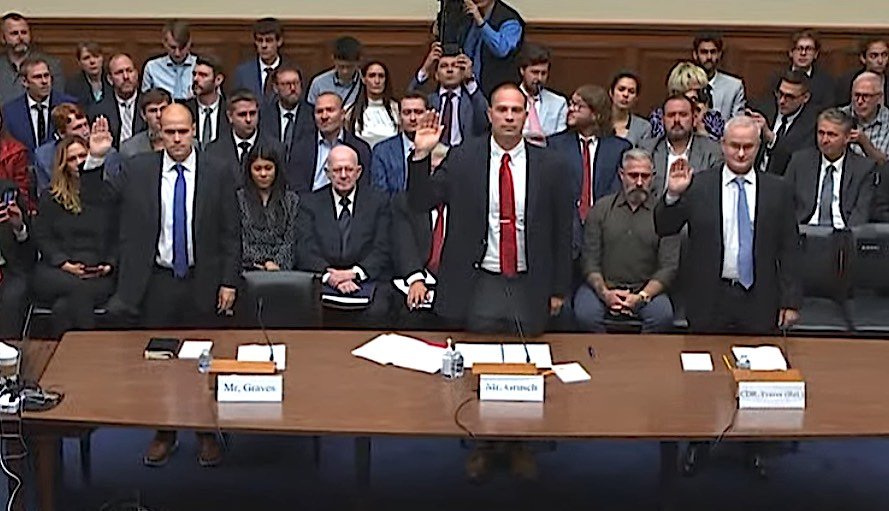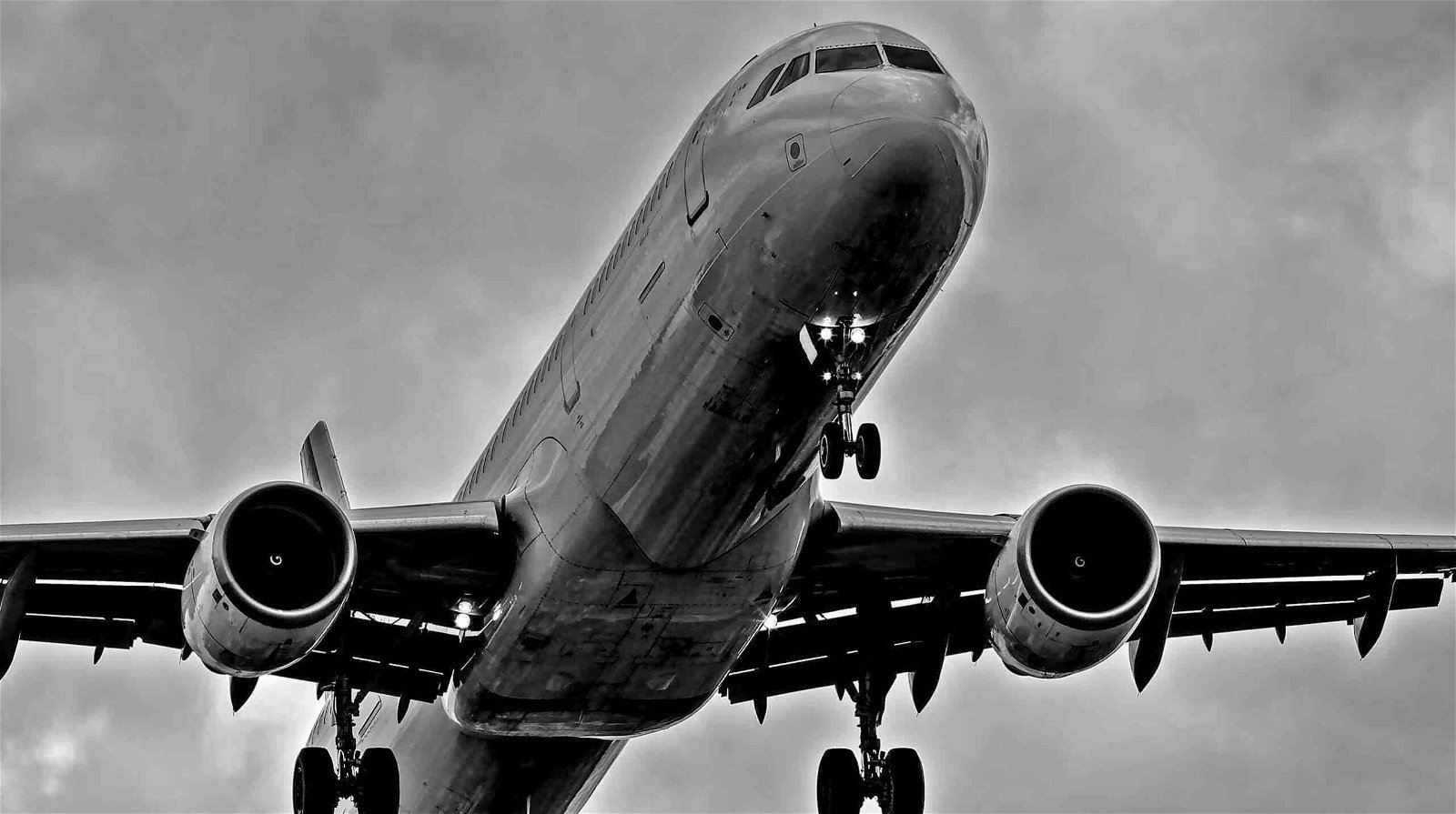Several incident reports describing recent U.S. pilot UFO sightings in controlled airspace convey the serious concerns aviators have about potential collisions with unknown objects, The Debrief has learned.
The unresolved aerial encounters with what the Pentagon now calls unidentified anomalous phenomena, or UAP, were filed as incident reports with NASA’s Aviation Safety Reporting System (ASRS) and describe events in U.S. airspace that highlight ongoing safety concerns associated with appearances of aerial objects of unknown origin.
The phenomenon “represents a significant threat”
One incident, which occurred in April 2023, describes an encounter with a dark-colored object potentially “as large as a small business-type jet aircraft” that was also detected on the radar of the nearest air route traffic control center (ARTCC, or ATC) and deemed a threat due to the risk of a possible mid-air collision.
“During climb out on departure,” a portion of the pilot’s report reads, “we encountered an unidentified flying object or phenomena of some sort,” which reportedly occurred between the MSLIN and STOMP FIX geographical positions.
“The object was brought to our attention by ATC when they advised us of a primary radar target that was at our 9 o’clock position within a half-mile distance,” the pilot states in the report. “The close proximity of the traffic advisory raised our attention to the threat.”
The pilot states that the object was observed close to the 8 o’clock position on the captain’s side of the aircraft flying at the same altitude of 25,000 feet above mean sea level, or FL250, at the time the first visual contact was made. The object or aircraft seemed to maintain its track, moving to the 7 o’clock position relative to the reporter’s aircraft, at which time it was no longer deemed a potential threat.
The object, which could not be identified by the pilot, was described as potentially being some kind of large unmanned aerial vehicle (UAV) or possibly “a single ship military fighter/trainer aircraft,” which the pilot judged to have been traveling at least 200 knots.
“ATC was interested in the visual report since they were not talking with the aircraft, nor aware of its presence apart from the small primary radar return, and it was not transmitting an ADS-B OUT signal despite the Class A airspace requirements,” the report states.
Since the publication of Federal Regulations 14 CFR 91.225 and 14 CFR 91.227 in May 2010, the Federal Aviation Administration (FAA) has required any aircraft operating in Class A, B, and C airspace to be equipped with Automatic Dependent Surveillance-Broadcast (ADS-B) capability.
“This phenomena represents a significant threat to our operation given the potential for a mid-air collision without the ability to react to a TCAS II Resolution Advisory as trained for the given scenario,” the pilot’s summary of the incident also states, referencing the Traffic Alert and Collision Avoidance System (TCAS II) aviators rely on for instructions on the avoidance of traffic conflicts. The recommended maneuvers provided by TCAS II, known as Resolution Advisories, or RAs, allow pilots the ability to increase or maintain their vertical separation from other aircraft operating nearby and may instruct aviators to climb or descend in altitude, as well as adjust their vertical speed to avoid possible collisions.
“Coordinate reports with controlling authorities to reduce potential for mid-air collision,” the pilot’s report tersely concludes. The incident was assigned within the ASRS under Accession Number (ACN) 1991689.


Another intriguing report logged with the ASRS (ACN 1978900) in February 2023 describes a multiple-pilot observation of a fast-moving, elongated white object.
The incident report states that the pilot “observed [the] unexplained phenomenon at my 2 o’clock at what appeared to be near my altitude or above. I am not sure the distance. At first I thought it to be a reflection in my windscreen, but after moving my head around and point of view, the object stayed steady.”
“The object appeared rectangular or oblong and milky white,” the pilot stated. “My First Officer (FO) returned from the forward [lavatory] and observed the object moving briskly southbound with me after I asked him ‘what is that’. It moved at steady speed southbound and disappeared.”
“I regret not taking a video, but was taken by what I was seeing,” the pilot added about the fleeting encounter. Within minutes, the pilot said they received radio communication from a nearby ARTCC asking “if anyone had seen the light or object.”
“I informed them I had and got a phone number to a ZZZ controller,” the report states (Editor’s Note: ZZZ is a placeholder designation used in ASRS reports to de-identify certain recognizable locations or other features, to help guarantee anonymity to aviators who file reports).
“Another flight captained by a friend also witnessed the Unidentified Aerial Phenomena (UAP), along with numerous other aircraft,” the pilot wrote. “I have never witnessed anything like it in almost 30 years of flying.”
NASA’s Aviation Safety Reporting System
For several decades, the ASRS has functioned as a reporting system to collect, analyze, and respond to incident reports related to various aviation safety issues voluntarily submitted by pilots and other personnel or observers.
According to an official ASRS program briefing, the ASRS data is used to help identify and remedy problems in the National Aviation System (NAS), along with supporting policy formulation, planning and improvement of the NAS. The program also works to enhance understanding of human factors related to safety research, noting that “over two-thirds of all aviation accidents and incidents have their roots in human performance errors.”
Although the information is collected primarily for use by the Federal Aviation Administration (FAA), the ASRS is maintained by NASA, which functions as an objective third party to help ensure the anonymity of individuals who submit information to the system.
“Reports sent to the ASRS are held in strict confidence,” the ASRS website states, noting that no reporter’s identity has been compromised in more than 1,000,000 reports it has received. “Dates, times, and related information, which could be used to infer an identity, are either generalized or eliminated” to ensure anonymity to reporters and thereby encourage reporting of aviation incidents without fear of reprisals or litigation that could otherwise result. The ASRS Database Online makes all the incident reports NASA collects through the ASRS freely accessible to the public.
In 2021, an initial investigation by The Debrief revealed several incident reports retrieved from the ASRS database involving pilot observations of unidentified aerial objects. A common feature represented throughout many of the incident reports, which span several decades, is the level of concern the encounters generated among pilots who observed these aerial phenomena.
Unrecognizable Objects and Erratic Movements
In another incident reported to the ASRS (ACN 1902497) in May 2022, a pilot instructor described being forced to take evasive action to avoid a midair collision with an object they were unable to identify during a routine training flight.
“While we were clearing the area for a maneuver I spotted the unidentified object as we were quickly approaching it,” the pilot’s report states. The object reportedly appeared very suddenly and appeared to be hovering without showing any signs of movement.
“I immediately took the controls and took evasive action in order to avoid a midair collision,” the pilot states in the report. “Initially, I mistook the object for something of the light weight [sic] category or a drone, since it did not resemble an airplane or a helicopter.”
“As we passed the object I was able to get a [decent] look at the object and could not identify what [it] could possibly be. I then resumed the training flight in a safe direction away from this encounter.”


Another incident reported in December 2021 (ACN 1866128) details the observation of an unusual flashing light, the movement of which appeared to be inconsistent with normal aircraft.
“Unidentified flying object observed from [the] ground with very sporadic flight pattern. Flashing beacon South of [the shore] estimated altitude 3,000-4,000 ft MSL. Object has disappeared twice and reappeared,” the brief report states.
“Flight pattern [is] too erratic and beyond capabilities of traditional aircraft. Beacon was flashing white. No red/green position lights,” the report concludes.
Unusual Sightings of Possible UAVs?
Some of the sightings involving unidentified objects were logged within the ASRS as incidents involving suspected unauthorized drone flights, although descriptions of their curious appearance and movement, as well as their dangerous proximity to aircraft, further highlight the safety issues aviators have faced in recent years.
In an August 2019 incident (ACN 1673603), a copilot reported watching as “an object suddenly appeared in the windscreen. Before I could even communicate a warning it flew just overhead of our aircraft.”
“Pilot Flying did not see the object as it passed directly overhead within 50 feet. I immediately commented on a near miss with some type of unidentified object,” the observer states in the ASRS report.
The observer offers an intriguing description of the object, noting they initially thought they had seen “a large flat type of balloon” though emphasizing that it “appeared solid in nature as it flashed by.” Air traffic controllers subsequently communicated that an unauthorized drone was believed to have been operating in the area, based on similar reports indicating the unusual object had been observed “flying east of the airport north of the final approach course.”
A separate incident report from November 2018 (ACN 1595625) also describes an encounter with an unidentified aircraft that may have been a variety of UAV observed by pilots approaching San Diego International Airport (SAN).
“On approach to SAN we saw what appeared to be a drone or unidentified aircraft crossing our flight path,” the reporter writes, noting that the encounter occurred at an estimated altitude somewhere between “possibly 5000 feet or 6000 feet MSL.”
Following communication with ATC about the object, the pilots report that they “closed the loop and remarked about the [weather] south of the border and were both curious what a large drone would have been doing.”
“About 5000 feet on arrival, we were questioned as to our track and asked if we had the field in sight,” the report concludes. “We replied yes and after landing were asked to contact ATC.”
NASA, the DOD, and the FAA Grapple Over UAP
Last October, a spate of pilot sightings of unidentified objects reported by The Debrief ultimately pointed to the prevalence of misidentifications of Starlink satellites being made by commercial pilots.
Although unauthorized drone flights or sightings of other conventional objects cannot be ruled out as potential identifications for some of the objects detailed in the recent ASRS reports The Debrief uncovered, the reports nonetheless convey incidents involving physical objects of some kind, operating at unsafe distances from the aircraft where observing pilots and crewmembers were located.
Last June, NASA announced its plans to commission a study team that would examine UAPs focused on “identifying available data, how best to collect future data, and how NASA can use that data to move the scientific understanding of UAPs forward.” The study officially began in October 2022 and was projected to last for a period of nine months.


During a televised public meeting by NASA’s UAP study team on May 31, 2023, Sean Kirkpatrick, the current director of the Pentagon’s All-domain Anomaly Resolution Office (AARO), said the current batch of incident reports his office is analyzing had risen from around 650 cases to more than 800 after he “got FAA’s data integrated in finally.”
The FAA says that observations of weather phenomena, UAVs, and other potential safety issues are commonly reported to the agency by pilots operating in U.S. airspace.
“Pilots are trained to focus on safely flying their aircraft,” the FAA said in an email to The Debrief. “Pilots routinely make reports to air traffic controllers about events including turbulence, other weather conditions, and sightings of drones and other aircraft.”
In 2021, the FAA said for the first time publicly in a statement provided to The Debrief that it “documents Unidentified Aerial Phenomenon (UAP) sightings whenever a pilot reports one to an air traffic control facility.”
Previously, the FAA had maintained for years that it did not track UAP sightings by commercial pilots, advising instead that sightings be reported to civilian agencies like the National UFO Reporting Center (NUFORC) or the National Aviation Reporting Center on Anomalous Phenomena (NARCAP).
In its statement to The Debrief, the FAA added that pilot reports that could be corroborated with supporting information like radar were forwarded at that time to the Unidentified Aerial Phenomena Task Force, the predecessor organization to the DoD’s current investigations under AARO.
Kirkpatrick’s office is also expected to deliver its next public report on the DoD’s UAP investigations sometime later this year. However, Kirkpatrick maintains his previous statements that AARO “has found no credible evidence thus far of extraterrestrial activity, off-world technology, or objects that defy the known laws of physics” remain accurate, despite recent whistleblower claims involving an alleged program purported to have collected exotic technologies detailed in an Intelligence Community Inspector General complaint first reported by The Debrief in June.
The claims were echoed during a Congressional hearing on July 26, 2023, during which David Grusch, the whistleblower first revealed publicly in The Debrief article on June 5, 2023, appeared alongside former Navy fighter pilots David Fravor and Ryan Graves.


During last month’s hearing, Graves, who now heads the advocacy organization Americans for Safe Aerospace, emphasized the need for a formal reporting system that pilots may use to report UAP incidents and potential safety issues related to them.
“They do not have any reporting system they can send this to,” Graves said of military and commercial pilots who have expressed frustration to his organization about not knowing where they can report their sightings.
“The commercial pilots who have reached out to me are doing so because they don’t feel there is another safe means to do so,” Graves said during the hearing.
“It’s actually a travesty that we don’t have a system to correlate this and actually investigate,” added Fravor, now a retired Commander in the U.S. Navy who formerly served as the Commanding Officer of Strike Fighter Squadron Forty-One.
To date, there is still no formal government reporting system for pilots and others to use to directly report their UAP encounters to AARO, more than a year after the office was officially established.
Also running late is a report based on the findings of NASA’s independent study, which was initially expected to be delivered in July, although the study’s official NASA UAP FAQ page only says that the report “will be released in mid-2023.”
Although NASA says it is conducting the study for “the agency’s own science and air safety purposes,” it remains unclear whether the independent study team has analyzed UAP incident reports recently obtained through the ASRS, or from other sources that collect similar pilot sightings.
If you are a pilot who has had similar experiences with unidentified anomalous phenomena while flying in U.S. airspace, or are a witness to unusual aerial phenomena under other circumstances, we would like to hear from you. Consider emailing us with details about your experience.
Micah Hanks is the Editor-in-Chief and Co-Founder of The Debrief. He can be reached by email at micah@thedebrief.org. Follow his work at micahhanks.com and on Twitter: @MicahHanks.

